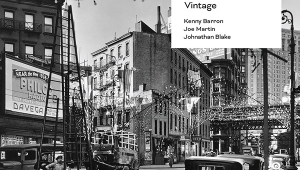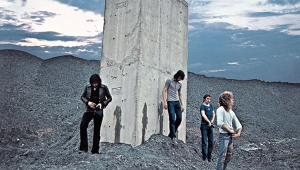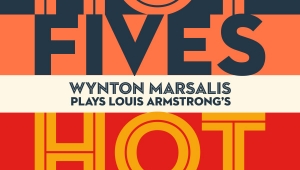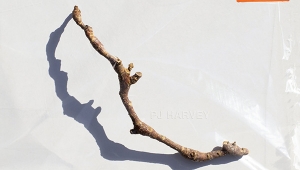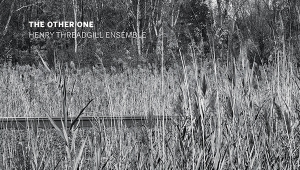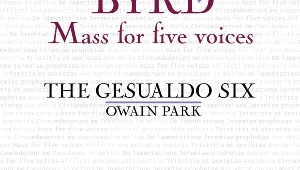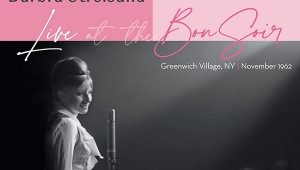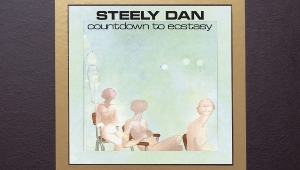| Columns Retired Columns & Blogs |
Recording of December 2006: Last Man Standing
JERRY LEE LEWIS: Last Man Standing
Shangri-La Entertainment 2006. (CD) Steve Bing, Jimmy Rip, prods. No eng listed. AAD? TT: 66:45
Performance ****
Sonics ****
Shangri-La Entertainment 2006. (CD) Steve Bing, Jimmy Rip, prods. No eng listed. AAD? TT: 66:45
Performance ****
Sonics ****
When you first see its cover shot, the Killer pounding away, the piano aflame, the letters screaming "The Most Amazing Classic Rock-N-Roll Album Ever!", you almost have to laugh. And when I saw the purple-prosed press release that came with the CD, I knew it was a Jerry Lee Lewis production all the way. No publicist to contact. No free photos to be had. Just an excited plea to join Jerry Lee's mailing list! The Killer don't need no stinkin' publicist.
 But then there's a list of guests that is hard to ignore. Jimmy Page? Neil Young? Springsteen? Although the supporting materials make no mention of it, and some of the before song patter suggests they were together, this is certainly one of those multi-year projects where tapes or ProTools files are sent back and forth for people to record their parts onto. Few, if any of the collaborators, ever lay eyes on anyone else. In most cases, this approach yields less than spectacular results.
But then there's a list of guests that is hard to ignore. Jimmy Page? Neil Young? Springsteen? Although the supporting materials make no mention of it, and some of the before song patter suggests they were together, this is certainly one of those multi-year projects where tapes or ProTools files are sent back and forth for people to record their parts onto. Few, if any of the collaborators, ever lay eyes on anyone else. In most cases, this approach yields less than spectacular results.
Here, though, and not too surprisingly, the X factor is the one and only Jerry Lee Lewis. At 71, rock 'n' roll's original wild child has still got enough left in the tank to stay with, and in some cases, out-run all these big bad rock legends.
From the opening bars of his inimitable butchering of Led Zeppelin's "Rock 'N' Roll,"—"Blowing through the chord changes" is the way Stereophile Editor John Atkinson described it with a smile of disbelief—to the final chords of that song where he mumbles out a line about "dad gum good Louisiana lovin'," you quickly get the idea that this is gonna be a wild ride. And wild is the way Jerry Lee wants it.
"Duets" isn't really an accurate description of the 21 tracks here. While each features a different guest, Lewis takes lead on every song, with sometimes the guest joining in, mostly on the choruses. In "Evening Gown," Lewis and Mick Jagger play with call-and-response verses before duetting on the choruses. After an opening exhortation of "C'mon now Killer!," Bruce Springsteen sings only on the choruses of his "Pink Cadillac." In "Travelin' Band," the album's most rocked-up track, Lewis—who leans heavily on his trademark glissandos and even purrs like a cat during the tune's saxophone solo—trades verses with John Fogerty before dueting with him on the chorus. Page, Eric Clapton (Trouble in Mind"), and B.B. King ("Before the Night Is Over") stay silent, adding only guitar licks to the proceedings.
Conversely, "Just a Bummin' Around" with Merle Haggard has an easy groove. The Killer's duet with Rod Stewart on "What Made Milwaukee Famous," a one-time hit for Lewis, is amusing considering the truth the song's message has had in both men's lives. And when it comes to pure fun laced with liberal amounts of winking irony, there's Lewis and Little Richard duetting on the Beatles' "I Saw Her Standing There." The irony, of course, comes from the fact that once upon a time, the Beatles had a large hand in nearly putting both men out of business. Their duets on the chorus, with Little Richard handling the high "ooooooOOhh" parts, are absolutely hilarious.
If there's a clunker here, it's the Kid Rock track. Why does this man have a career, let alone a track on this album? The former Robert Ritchie literally cannot sing. Shouting and shrieking is the only way he makes it through a cover of "Honky Tonk Woman," which seems like a weird song choice, but then, what kind of song can you really do with someone with as little talent as this? It's to Kid's credit that he respects his elders, but if you want to hear how far the record business has fallen, listen to a Kid Rock record.
Perhaps the key to this record's success is that none of Lewis's hits are included. Instead, the tunes come from the guests' songbooks. The effect this has is to force Lewis to stretch some as a singer, which elicits better vocal takes from him than otherwise might have been the case. (In recent years, Lewis has been known for sleepwalking through his hits in his live act, particularly when it came to his vocals.)
After the song choices, what makes this album go is Lewis himself who, besides having a ball, is in fine voice and is playing barrelhouse piano throughout like a man possessed. The glissandos rain down on most tunes and when he switches to pounding in the lower registers, shades of Lewis's golden early years emerge. He's also grand and flavorful in slower numbers, like his duet with Willie Nelson on "A Couple More Years."
After cutting such a singular figure in the world of popular music for so many years—much of the time to his detriment—Lewis richly deserves this affectionate tribute. Is it a novelty record on some levels? Certainly. But there's enough musical meat and genuine rock 'n' roll spirit here, particularly in Lewis's piano playing, to also make this a record that will stand on its own, perhaps as the recording coda to an extraordinary career.—Robert Baird
- Log in or register to post comments



